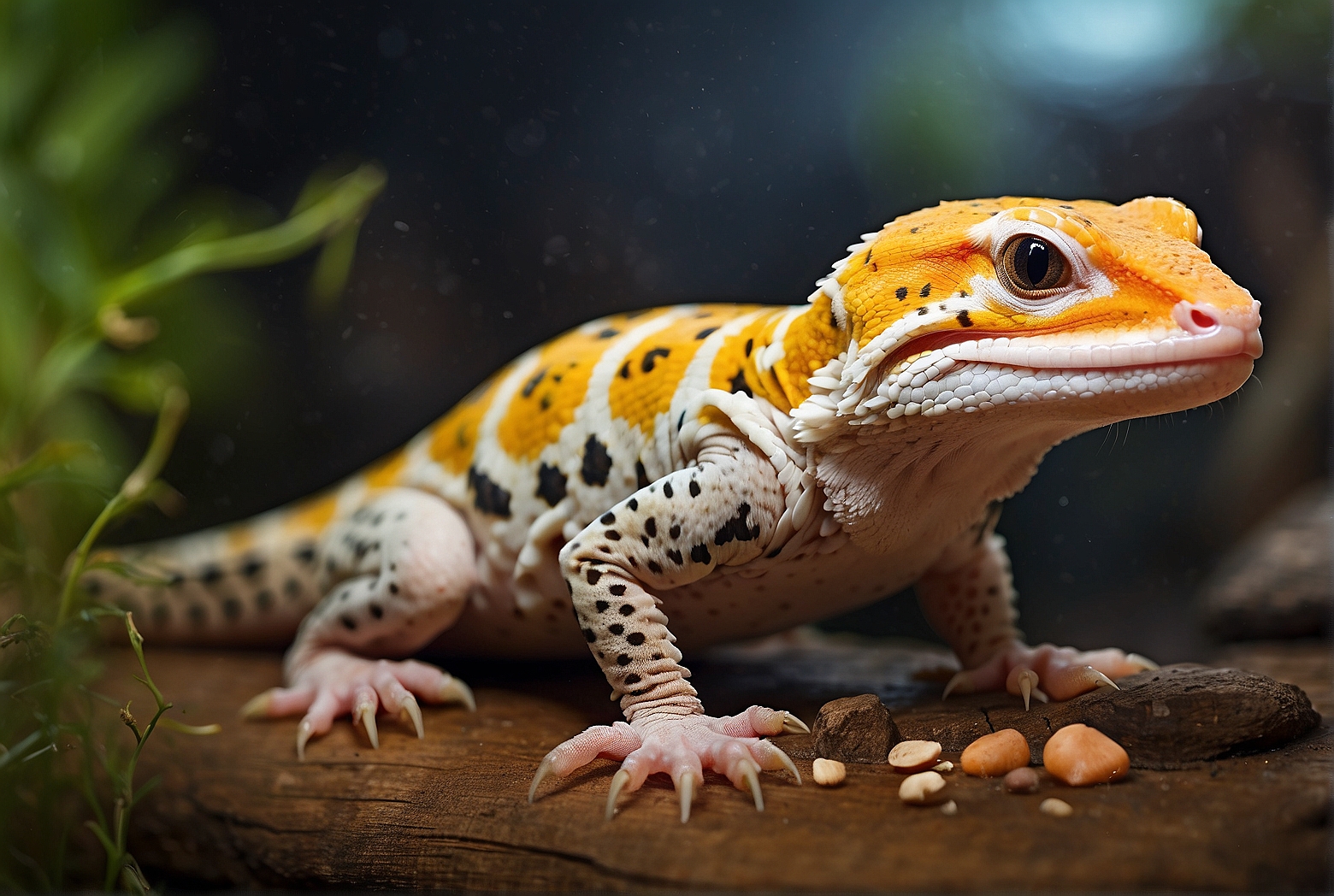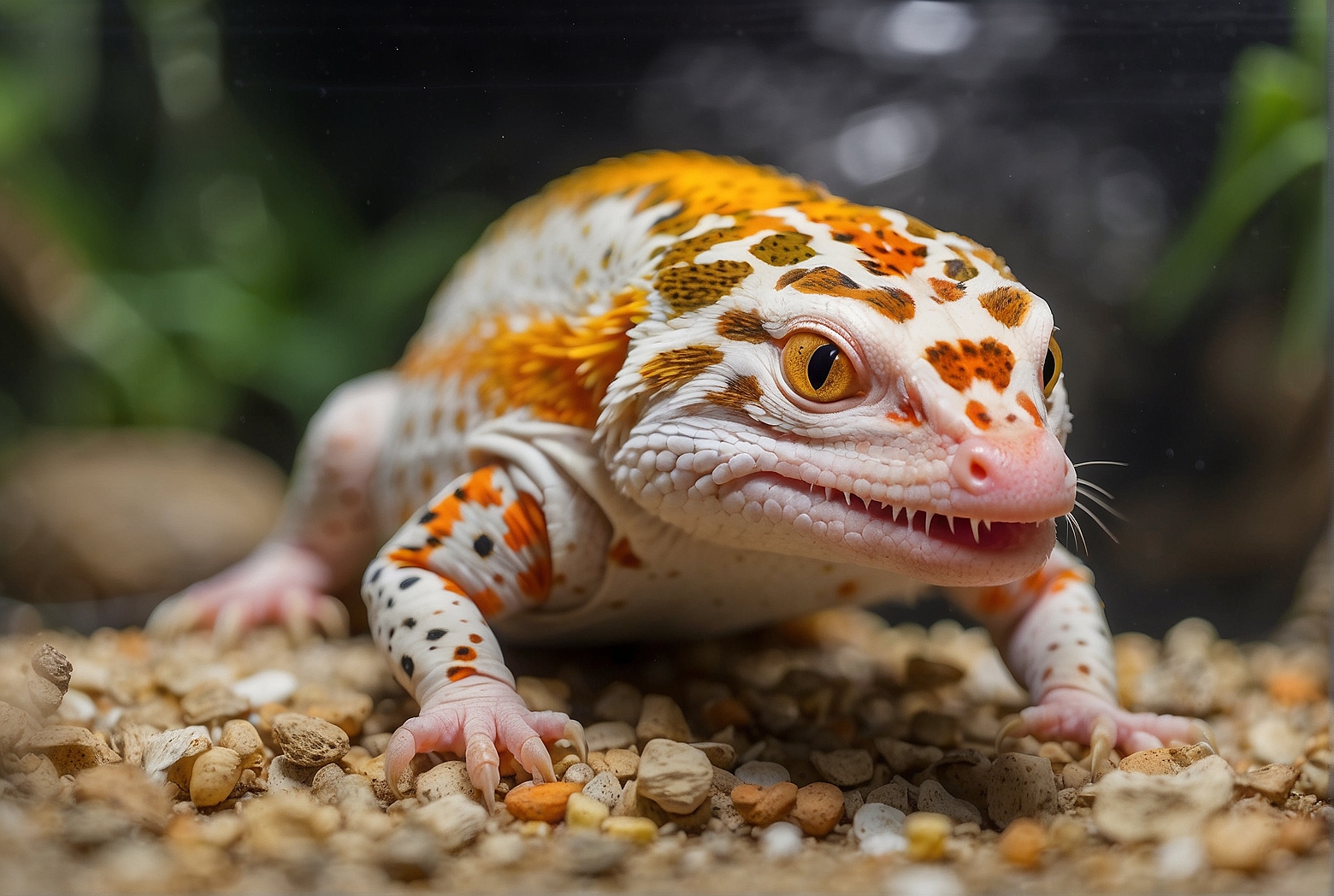If you’re the proud owner of a leopard gecko, you know how important it is to establish a proper feeding schedule to ensure their health and well-being. Understanding when and how to feed your gecko can make all the difference in their overall care. In this article, we’ll explore the ins and outs of creating a leopard gecko feeding schedule, providing you with valuable information and tips to keep your scaley friend happy and thriving. So, let’s jump right in and discover the secrets to keeping your gecko well-fed and content!
Leopard Gecko Feeding Schedule
Leopard geckos are fascinating and low-maintenance reptiles that make great pets. One of the most important aspects of caring for a leopard gecko is providing them with a proper feeding schedule. In this article, we will discuss the feeding requirements, frequency, portion sizes, and other important factors to consider when feeding your leopard gecko.
Leopard Gecko Feeding Requirements
Leopard geckos are omnivores, which means they eat a combination of both insects and fruits. In captivity, their primary diet consists of live insects such as crickets, mealworms, and waxworms. It is crucial to provide your gecko with a balanced diet that meets their nutritional needs.
Frequency and Portions
The frequency of feeding your leopard gecko depends on its age. Juvenile leopard geckos, which are typically less than a year old, need to be fed more frequently than adult geckos. For younger geckos, it is recommended to feed them daily, while adult geckos can be fed every other day.
When it comes to portion sizes, it is crucial to offer an appropriate amount of food that your leopard gecko can consume within 10-15 minutes. Overfeeding can lead to obesity and other health issues, so it is essential to monitor the amount of food you provide.
Choosing the Right Food
To ensure optimal health for your leopard gecko, it is essential to choose the right food. Feeder insects should be appropriately sized, as some insects may be too large for your gecko to consume, resulting in choking or digestive issues. Crickets should be no larger than the space between your gecko’s eyes.

It is also crucial to provide a variety of insects to promote a diverse nutrient intake. Mealworms, waxworms, and phoenix worms are excellent options to include in your gecko’s diet. Additionally, gut-loading the insects with nutritious foods before feeding them to your gecko will provide even greater nutritional value.
Feeding Juvenile Leopard Geckos
Young leopard geckos have higher energy requirements and need to be provided with a more frequent feeding schedule. In addition to daily feedings, it is crucial to monitor their growth and adjust their diet accordingly. As they grow, their appetite will increase, so it is essential to observe their feeding habits and adjust portion sizes accordingly.
Feeding Adult Leopard Geckos
Adult leopard geckos have lower energy requirements compared to juveniles. Feeding them every other day ensures they receive adequate nutrition without the risk of overfeeding. It is essential to monitor their body condition and adjust feeding frequency if necessary. Regularly assessing their weight and overall health is crucial for maintaining optimal well-being.
Supplementing with Vitamins and Minerals
Leopard geckos require an appropriate balance of vitamins and minerals for their overall health. Dusting the feeder insects with a reptile-specific calcium supplement before feeding them to your gecko is important to prevent calcium deficiency and associated health problems like metabolic bone disease. You can also provide a vitamin supplement to ensure they receive a well-rounded diet.
Watering Schedule
In addition to a proper feeding schedule, providing access to fresh water is vital for leopard geckos. Place a shallow dish of clean water in their enclosure, making sure it is easily accessible but shallow enough to prevent drowning. Change the water daily to keep it fresh and free from contaminants. Some geckos may not readily drink from a dish, so misting the enclosure to simulate rainwater droplets can encourage hydration.
Observing and Monitoring Feeding Habits
Keeping a close eye on your leopard gecko’s feeding habits is essential for their well-being. They should eagerly consume the offered food without any signs of difficulty. If you notice your gecko showing disinterest in food, refusing to eat, or displaying unusual behaviors, it may indicate a potential health issue. Timely observation and intervention can prevent further complications.

Behavioral Indications of Feeding Issues
Leopard geckos are generally enthusiastic eaters, and a sudden change in their appetite may signify an underlying problem. Weight loss, lethargy, excessive shedding, and changes in stool consistency are all signs of potential health issues. Inadequate heating, improper substrate, or stress can also impact their feeding behavior. If you notice any concerning signs, consult a reptile veterinarian to address the issue promptly.
Consulting a Reptile Veterinarian
When it comes to the health and well-being of your leopard gecko, it is essential to consult a reptile veterinarian for expert advice and guidance. A veterinarian with experience in reptile care can provide a comprehensive assessment, diagnose any health problems, and recommend appropriate treatments. Regular check-ups can ensure your gecko remains in optimal condition, and any feeding issues can be addressed promptly.
By following a proper feeding schedule, providing a variety of nutritious food, and monitoring your leopard gecko’s feeding habits, you can ensure their overall health and well-being. Remember, a well-fed and happy leopard gecko is a healthy and thriving one.
